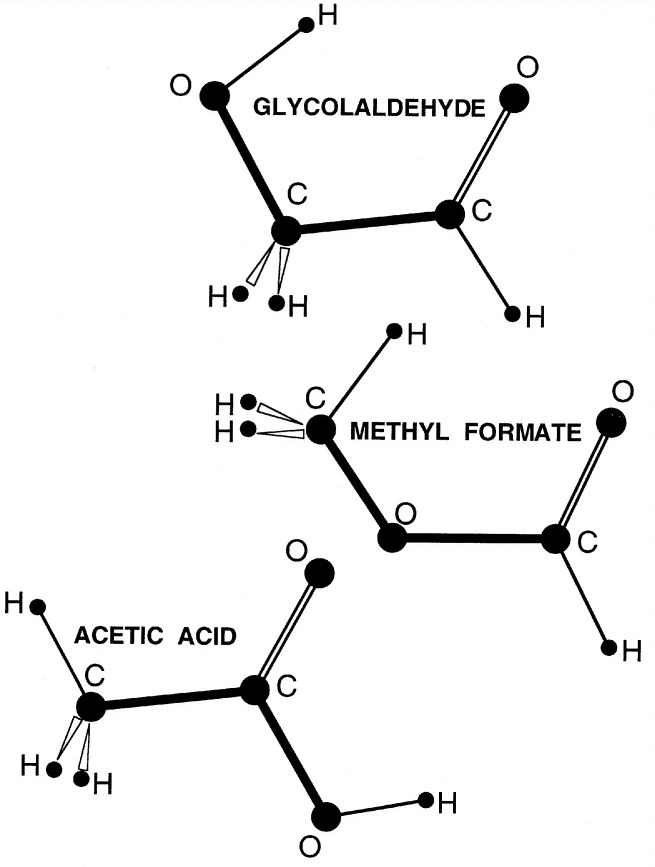 National Radio Astronomy Observatory
National Radio Astronomy Observatory National Radio Astronomy Observatory
National Radio Astronomy Observatory



Interstellar detection by Hollis, J. M., Lovas, F. J. & Jewell, P. R. 2000, Ap. J. Letters, 540, L107
Interstellar glycolaldehyde (CH2OHCHO) has been detected in emission toward the Galactic center source Sagittarius B2(N) by means of millimeter-wave rotational transitions. Glycolaldehyde is an important biomarker since it is structurally the simplest member of the monosaccharide sugars that heretofore have gone undetected in interstellar clouds. There is no consensus as to how any such large complex molecules are formed in the interstellar clouds. It may be that the typical environment of dense interstellar clouds is favorable to glycolaldehyde synthesis by means of the polymerization of formaldehyde (H2CO) molecules either on grain surfaces or in the gas phase. Alternatively, we speculate that glycolaldehyde and other complex molecules may undergo assembly from functional molecular groups on grain surfaces. Utilizing common chemical precursors, a chance process could account for the high degree of isomerism observed in complex interstellar molecules (e.g., methyl formate, acetic acid, and glycolaldehyde). This work suggests that the phenomenon of isomerism be investigated further as a means of potentially constraining interstellar chemistry routes for those individual sources where the condition of good source-beam coupling can be achieved.
